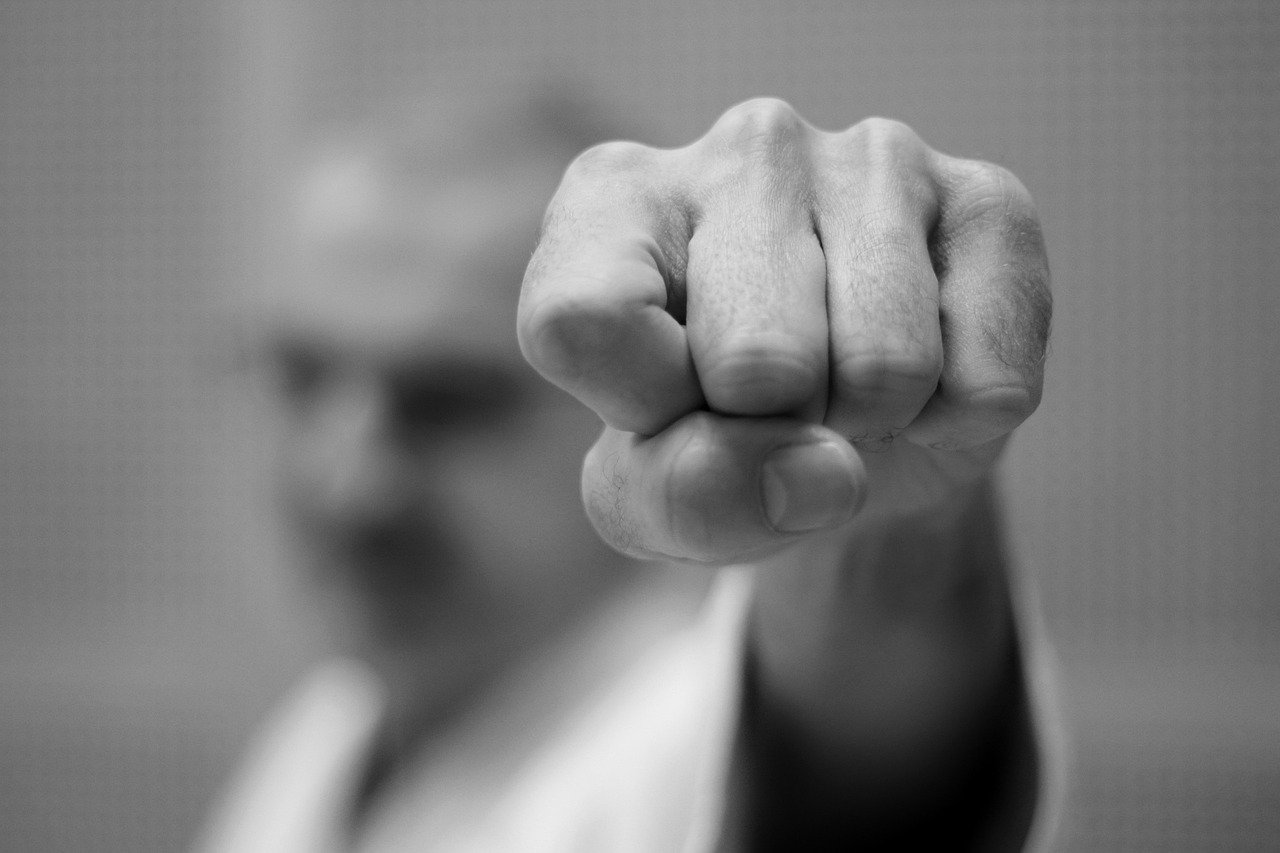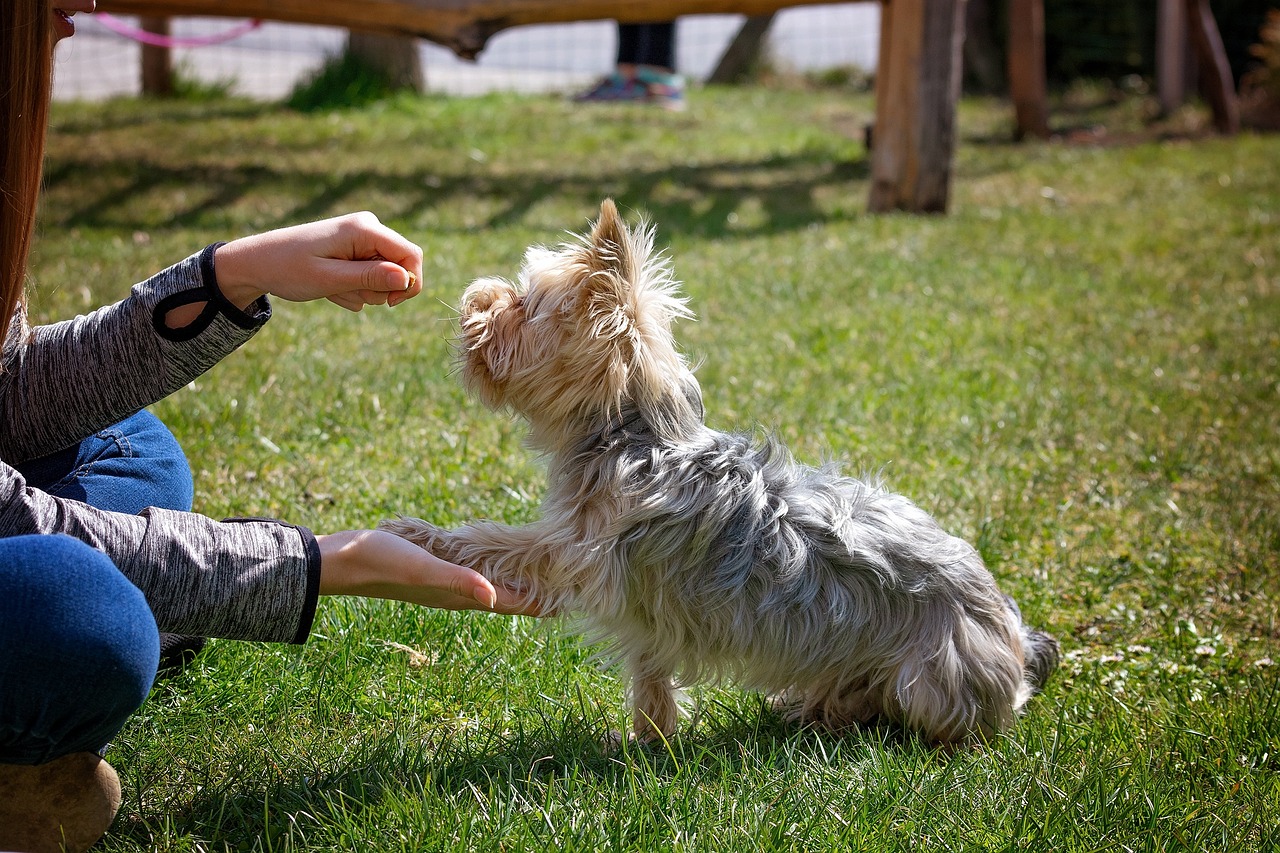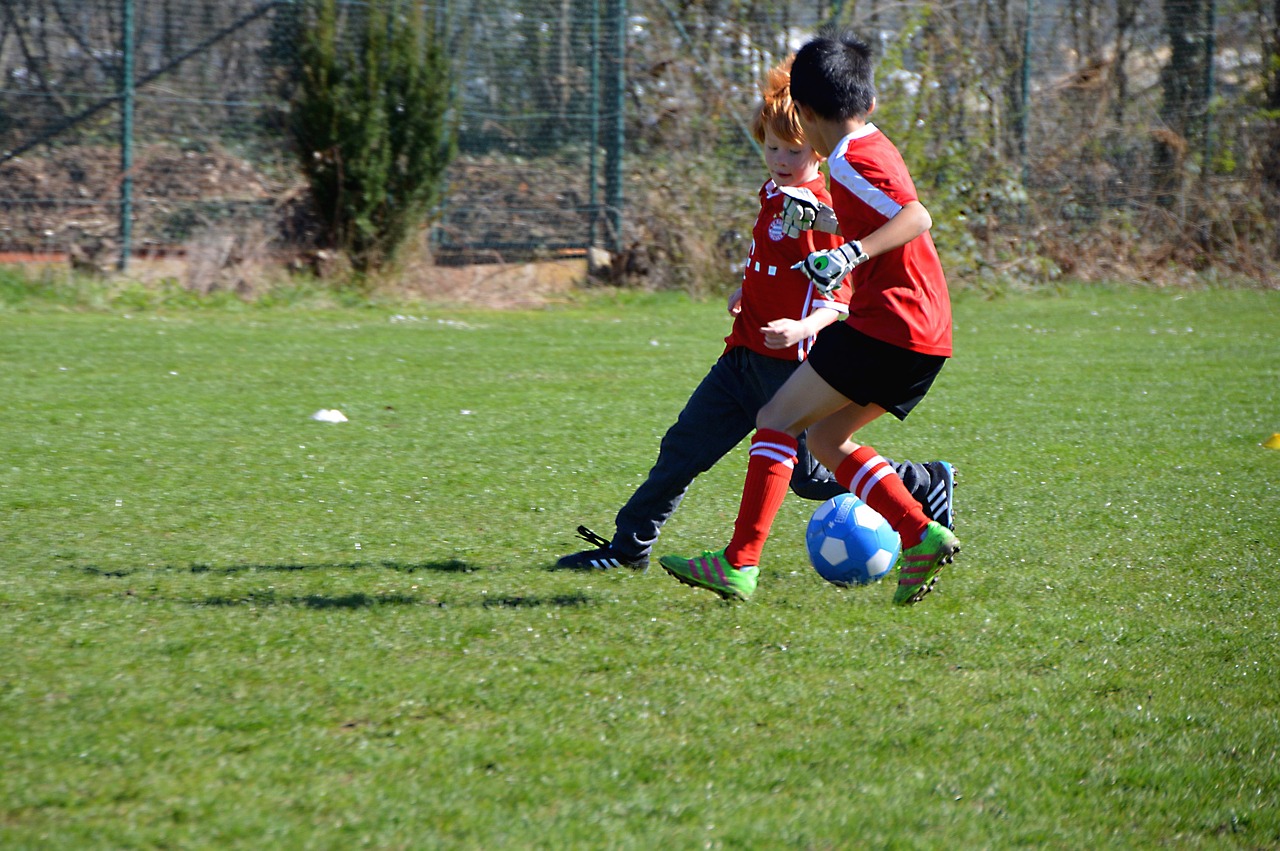Five Effective Stress Management Techniques within Self-Defense Training
In today’s fast-paced world, stress is an unavoidable part of life, and it can significantly impact our performance, especially in high-pressure situations like self-defense training. This article explores five key techniques that not only help in managing stress but also enhance mental clarity and physical performance. By incorporating these techniques, self-defense practitioners can ensure they remain safe, confident, and focused when it matters most.
Recognizing how stress impacts performance is crucial for self-defense practitioners. When faced with a threatening situation, our bodies undergo a series of physiological changes. The fight-or-flight response kicks in, releasing adrenaline and cortisol, which can lead to heightened senses but also overwhelming anxiety. This section delves into the physiological and psychological effects of stress during training and real-life scenarios. Understanding these effects can empower practitioners to develop coping mechanisms that enhance their training experience.
One of the most effective ways to manage stress is through breathing techniques. These techniques can significantly reduce stress levels and help maintain composure during self-defense training. By focusing on your breath, you can ground yourself and regain control over your body’s response to stress. This section outlines various breathing exercises that practitioners can use to stay focused and calm during intense training sessions.
Diaphragmatic breathing, also known as abdominal breathing, is a technique that enhances oxygen flow and promotes relaxation. Instead of shallow breaths that only fill the upper lungs, diaphragmatic breathing encourages full oxygen exchange. This subsection explains how to practice this technique effectively during self-defense training sessions. To perform diaphragmatic breathing:
1. Sit or lie down comfortably. 2. Place one hand on your chest and the other on your abdomen. 3. Inhale deeply through your nose, allowing your abdomen to rise while keeping your chest still. 4. Exhale slowly through your mouth, feeling your abdomen fall. 5. Repeat for several minutes, focusing on the rise and fall of your abdomen.
Understanding the benefits of diaphragmatic breathing can empower practitioners to incorporate it into their routines. This technique not only helps reduce stress but also:
- Improves concentration and focus
- Enhances physical performance
- Promotes a sense of calm and relaxation
By regularly practicing this technique, practitioners can experience improved performance and better stress management during their training sessions.
To master diaphragmatic breathing, here are some practical exercises that can be integrated into your routine:
- Practice for 5-10 minutes daily.
- Incorporate breathing exercises before and after training sessions.
- Use diaphragmatic breathing during moments of high stress to regain composure.
Visualization techniques can help practitioners mentally prepare for training and confront stress. By picturing themselves successfully executing self-defense moves or handling stressful situations, practitioners can build confidence and reduce anxiety. This subsection discusses how to effectively use visualization for self-defense scenarios. Imagine a scenario where you have to defend yourself; visualize every step, from recognizing the threat to executing your defense. This mental rehearsal can make a significant difference in real-life situations.
Incorporating mindfulness into self-defense training can enhance focus and reduce anxiety. Mindfulness practices allow practitioners to stay present in the moment, rather than getting lost in worries about potential threats or past failures. This section introduces mindfulness practices tailored for practitioners to improve their mental resilience.
Grounding exercises help practitioners stay present and focused. These techniques can be integrated into training sessions to help manage stress. For example, during training, take a moment to engage your senses:
- Notice the sounds around you.
- Feel the ground beneath your feet.
- Take in the sights of your training environment.
By focusing on your surroundings, you can anchor yourself in the present moment, reducing feelings of overwhelm.
Progressive muscle relaxation is another effective way to manage stress. This technique involves tensing and then relaxing different muscle groups throughout the body. It can be implemented before and after training to alleviate tension. To practice:
1. Find a comfortable position. 2. Tense a muscle group (e.g., fists, shoulders) for 5-10 seconds. 3. Release the tension and notice the difference in sensation. 4. Move through different muscle groups systematically.
This technique helps practitioners become more aware of their body and can lead to a deeper sense of relaxation.
Q: How can I incorporate these techniques into my training routine?
A: Start by dedicating a few minutes at the beginning and end of each training session to practice these techniques. Gradually integrate them into your sessions as you become more comfortable.
Q: Can these techniques help in real-life situations?
A: Absolutely! Regular practice of these techniques can help you respond more effectively in real-life scenarios, enhancing your confidence and reducing anxiety.
Q: How long does it take to see results from these techniques?
A: Results can vary, but many practitioners notice improvements in their stress management and performance within a few weeks of consistent practice.

Understanding Stress in Self-Defense
Understanding how stress impacts performance is crucial for anyone involved in self-defense training. Stress is not just a mental hurdle; it manifests physically, influencing how we react in both training and real-life situations. Imagine being in a high-pressure scenario—your heart races, your palms sweat, and your mind starts to whirl. This is your body’s natural response to stress, often referred to as the "fight or flight" reaction. In self-defense, this response can be a double-edged sword: it can enhance your performance by sharpening your reflexes, but it can also hinder your ability to think clearly and react appropriately.
When stress kicks in, it triggers a cascade of physiological changes, including increased heart rate, rapid breathing, and heightened muscle tension. These changes can lead to a state of hyper-awareness, where every sound and movement seems amplified. While this may sound beneficial, it can actually cloud your judgment and impair your decision-making skills. In a self-defense situation, where every second counts, being overwhelmed by stress can mean the difference between successfully defending yourself and succumbing to fear.
Moreover, the psychological effects of stress cannot be overlooked. Anxiety and fear can lead to a cycle of negative thinking, where you might doubt your skills or question your ability to handle a confrontation. This mental turmoil can create a self-fulfilling prophecy, where your performance declines because you’re too busy worrying about what might happen. It’s essential to recognize these patterns and develop strategies to manage stress effectively.
To illustrate the impact of stress, consider the following table that outlines common stress responses and their effects on performance:
| Stress Response | Physical Effects | Performance Impact |
|---|---|---|
| Increased Heart Rate | Blood pumps faster, preparing for action | Can enhance speed but may lead to fatigue |
| Rapid Breathing | More oxygen intake, but can lead to hyperventilation | Improves alertness but may cause dizziness |
| Muscle Tension | Body prepares for physical action | Can improve strength but may hinder flexibility |
| Heightened Awareness | Increased sensitivity to surroundings | Improves reaction time but can overwhelm senses |
By understanding these effects, practitioners can start to recognize their own stress responses during training. This awareness is the first step toward developing effective stress management techniques. Remember, the goal of self-defense is not just about physical prowess; it’s also about maintaining mental clarity and emotional control. The more you can manage your stress, the more confident and capable you will feel when faced with real-world challenges.

Breathing Techniques
When it comes to self-defense training, stress can often feel like an unwelcome guest that just won't leave. But what if I told you that the key to managing that stress lies in something as simple as your breath? are powerful tools that can significantly reduce anxiety and enhance your performance, allowing you to stay calm and collected in high-pressure situations. Imagine being in a heated training session or facing a real-life threat; the ability to control your breath can be the difference between panic and poise.
Effective breathing techniques can help practitioners maintain composure and focus during self-defense training. These techniques not only improve oxygen flow but also promote relaxation, which is essential for making split-second decisions. One of the most effective methods is diaphragmatic breathing, which involves engaging the diaphragm fully while inhaling and exhaling. This method increases the amount of oxygen you take in, which is crucial when your body is under stress. Think of it like filling a balloon; the more air you let in, the bigger and more resilient it becomes.
Diaphragmatic breathing, often referred to as "belly breathing," is a technique that enhances oxygen flow and promotes relaxation. To practice this method effectively during self-defense training sessions, find a comfortable position—whether sitting or lying down. Place one hand on your chest and the other on your abdomen. As you inhale deeply through your nose, focus on expanding your belly rather than your chest. You should feel your hand on your abdomen rise while the hand on your chest remains relatively still. This technique encourages deeper breaths and can significantly lower your stress levels.
Understanding the benefits of diaphragmatic breathing can empower practitioners to incorporate it into their routines. Some key benefits include:
- Improved Oxygen Intake: By utilizing the diaphragm, you allow more air to fill your lungs, providing your body with the oxygen it needs to function efficiently.
- Reduced Heart Rate: Slower, deeper breaths can help lower your heart rate, making you feel calmer and more in control.
- Enhanced Focus: Focusing on your breath can help clear your mind, allowing you to concentrate better on your training or the task at hand.
To master diaphragmatic breathing, here are some practical exercises you can incorporate into your training routine. Try these exercises regularly to ensure that you can apply the technique whenever stress arises:
- 5-Count Inhale and Exhale: Inhale deeply for a count of five, hold for a moment, and then exhale slowly for another count of five. Repeat this for several minutes.
- Visualization with Breathing: While practicing diaphragmatic breathing, visualize a calm place or a successful self-defense scenario. This combination can amplify the relaxation response.
- Breath Counting: Count each breath as you inhale and exhale. This technique not only helps with focus but also provides a rhythmic pattern that can further reduce anxiety.
Incorporating these breathing techniques into your self-defense training can transform your experience, making it not just about physical prowess but also about mental clarity. Remember, the next time you're feeling overwhelmed, take a moment to breathe deeply. It’s a small act that can lead to significant results.

Diaphragmatic Breathing
, often referred to as "abdominal breathing" or "belly breathing," is a powerful technique that can significantly enhance your self-defense training. This method focuses on engaging the diaphragm, a large muscle located at the base of the lungs, which can improve oxygen intake and promote a state of relaxation. When you practice this technique, you're not just taking deeper breaths; you're also sending a signal to your body that it's time to calm down and regain control, particularly in high-pressure situations.
One of the most fascinating aspects of diaphragmatic breathing is how it can transform your physical and mental state. Have you ever felt your heart race during a stressful moment? That’s your body's natural response to stress, often referred to as the "fight or flight" response. By mastering diaphragmatic breathing, you can counteract this reaction, helping to keep your mind clear and focused. This is especially crucial during self-defense training, where clarity can mean the difference between success and failure.
To practice diaphragmatic breathing effectively, follow these simple steps:
- Find a comfortable position, either sitting or lying down.
- Place one hand on your chest and the other on your abdomen.
- Inhale deeply through your nose, ensuring your abdomen rises while your chest remains relatively still.
- Exhale slowly through your mouth, feeling your abdomen fall.
By repeating this process for a few minutes, you can significantly lower your stress levels and enhance your focus. It’s like hitting a reset button for your body and mind, allowing you to approach your training with renewed energy and confidence.
The benefits of incorporating diaphragmatic breathing into your self-defense training are numerous. Firstly, it helps in reducing anxiety and stress, which can cloud your judgment during critical moments. Secondly, it improves your overall performance by increasing oxygen flow to your muscles, enhancing endurance and strength. Lastly, this technique fosters a sense of calm and control, which is invaluable when facing unexpected situations. Think of it as your mental armor—something that shields you from the chaos of your surroundings.
To truly master diaphragmatic breathing, it’s essential to practice regularly. Here are a couple of practical exercises you can try:
1. **Daily Practice:** Set aside 5-10 minutes each day to focus solely on your breathing. 2. **Incorporate into Workouts:** Use diaphragmatic breathing during your warm-ups and cool-downs to enhance relaxation. 3. **Stressful Situations:** Whenever you feel overwhelmed, take a moment to engage in diaphragmatic breathing to regain control.
By integrating these exercises into your routine, you'll not only become proficient in diaphragmatic breathing but also create a habit that supports your self-defense training and overall well-being.

Benefits of Diaphragmatic Breathing
Diving into the world of diaphragmatic breathing reveals a treasure trove of benefits that can profoundly impact self-defense training. This technique, often referred to as "belly breathing," is not just a way to fill your lungs; it's a powerful tool for managing stress and enhancing overall performance. When you engage in diaphragmatic breathing, you allow your body to access deeper levels of oxygen, which is crucial during intense physical activities like self-defense. But what exactly makes this breathing technique so beneficial?
Firstly, one of the most significant advantages of diaphragmatic breathing is its ability to reduce stress and anxiety. When you're faced with a high-pressure situation, your body often reacts with a fight-or-flight response, leading to rapid breathing that can exacerbate feelings of panic. By consciously practicing diaphragmatic breathing, you can counteract this response, promoting a sense of calm and control. This is especially vital in self-defense scenarios where mental clarity can mean the difference between success and failure.
Moreover, diaphragmatic breathing improves oxygen delivery to your muscles, enhancing endurance and performance. When your body is adequately oxygenated, you're less likely to tire quickly, allowing you to maintain your energy levels throughout training or a real-life confrontation. This can be a game-changer, especially when you're grappling or executing complex techniques that require physical stamina.
Another noteworthy benefit is the enhanced focus that comes with this technique. As you practice diaphragmatic breathing, you become more attuned to your body and surroundings. This heightened awareness can help you react more effectively to threats, making you a more capable self-defense practitioner. It's akin to tuning a musical instrument; just as a finely tuned guitar produces beautiful music, a well-focused mind can navigate stressful situations with grace and efficiency.
Incorporating diaphragmatic breathing into your self-defense training routine can also foster a sense of empowerment. Knowing that you have a reliable method to calm your nerves and regain control can boost your confidence, allowing you to approach training and potential confrontations with a positive mindset. This confidence is essential not only for performance but also for your overall enjoyment of the practice.
To summarize, the benefits of diaphragmatic breathing in self-defense training include:
- Stress reduction: Helps alleviate anxiety and promotes calmness.
- Improved oxygen delivery: Enhances endurance and physical performance.
- Increased focus: Heightens awareness and reaction capabilities.
- Boosted confidence: Empowers practitioners to approach challenges with a positive mindset.
By integrating diaphragmatic breathing into your training regimen, you're not just learning a technique; you're equipping yourself with a valuable skill that can transform your approach to self-defense. The next time you step onto the training mat or find yourself in a challenging situation, remember the power of your breath. It could very well be your secret weapon.

Practical Exercises
Mastering diaphragmatic breathing is not just about understanding the theory; it’s about putting it into practice. Here are some practical exercises that can help you integrate this technique into your self-defense training routine. These exercises are designed to be simple yet effective, ensuring that you can apply them whenever stress arises, whether during training or in real-life situations.
One of the first exercises you can try is the 5-5-5 Breathing Technique. This involves inhaling deeply through your nose for a count of five, holding that breath for another count of five, and then exhaling slowly through your mouth for a count of five. Repeat this cycle for a few minutes. This exercise not only helps in calming your mind but also prepares your body for physical exertion by increasing oxygen flow.
Another effective exercise is the Box Breathing Method. This technique can be particularly useful during self-defense training when you need to regain composure quickly. To practice box breathing, follow these steps:
- Inhale deeply through your nose for a count of four.
- Hold your breath for another count of four.
- Exhale slowly through your mouth for a count of four.
- Hold your breath again for a count of four.
Repeat this pattern for several minutes. The structured rhythm of box breathing helps to reduce anxiety and increase mental clarity, which is crucial when you’re in a high-pressure situation.
Additionally, you can practice breath counting. This method involves focusing on your breath while counting each inhale and exhale. Start by counting to ten and then begin again. If your mind wanders, gently bring your focus back to your breath and start counting from one. This exercise not only enhances your concentration but also encourages mindfulness, allowing you to stay present in the moment.
Incorporating these exercises into your self-defense training can significantly enhance your ability to manage stress effectively. Regular practice will not only improve your breathing technique but also boost your overall performance, ensuring that you remain calm and composed when it matters most. Remember, the key is consistency; the more you practice, the more natural these techniques will become, allowing you to face any challenge with confidence.
Q: How often should I practice diaphragmatic breathing?
A: It's beneficial to practice diaphragmatic breathing daily, even for just a few minutes. This will help reinforce the technique and make it more effective during high-stress situations.
Q: Can I use these breathing techniques in other areas of my life?
A: Absolutely! These techniques can be applied in various situations, such as during public speaking, exams, or any stressful event where you need to maintain calmness and focus.
Q: How long does it take to see results from these exercises?
A: Results can vary, but many practitioners notice improvements in their stress levels and focus within a few weeks of consistent practice.

Visualization Techniques
Visualization techniques are powerful tools that can help self-defense practitioners mentally prepare for both training and real-life confrontations. Imagine this: you're about to face a challenging situation, and instead of succumbing to anxiety, you take a moment to visualize yourself handling the situation with confidence and skill. This mental rehearsal not only calms your nerves but also enhances your performance. By picturing yourself successfully executing techniques, you create neural pathways that make it easier to perform those actions in reality.
So, how exactly can you implement visualization in your self-defense training? First, find a quiet space where you can focus without distractions. Close your eyes, take a deep breath, and start by picturing a specific scenario—maybe an unexpected confrontation. Visualize every detail: the environment, the people involved, and your own emotional state. As you immerse yourself in this mental image, imagine your body moving fluidly through the techniques you've learned, feeling the strength and agility in your movements.
One effective way to enhance your visualization practice is to break it down into segments. For instance, you could visualize:
- Your initial reaction to a threat
- The techniques you will use to defend yourself
- Your successful escape or resolution of the situation
By segmenting the experience, you can focus on each part, reinforcing your confidence and preparedness. Additionally, it's beneficial to incorporate positive affirmations into your visualization. Phrases like "I am strong and capable" or "I can handle any situation" can further boost your self-belief and reduce stress.
Another aspect of visualization is to practice it regularly, just like any physical technique. Set aside time after your training sessions to visualize what you practiced. This not only reinforces your learning but also helps your mind and body synchronize, making you more adept at executing techniques under pressure.
In summary, visualization techniques are not just about daydreaming; they are a structured approach to enhancing your self-defense skills. By incorporating these mental exercises into your training routine, you can significantly lower your stress levels and improve your overall performance. Remember, the mind is a powerful ally in your journey toward mastering self-defense, and with consistent practice, you can transform your mental landscape into a fortress of confidence.
Q: How long should I practice visualization techniques?
A: Ideally, you should dedicate at least 5-10 minutes per session, several times a week, to reap the full benefits of visualization.
Q: Can visualization replace physical training?
A: Visualization is a complementary practice that enhances physical training but should not replace it. Both mental and physical training are essential for effective self-defense.
Q: What if I find it hard to visualize?
A: If you struggle with visualization, start by focusing on simpler scenarios or even watching videos of self-defense techniques. Gradually, you can build up to more complex visualizations.

Mindfulness Practices
In the realm of self-defense training, play a pivotal role in enhancing focus and reducing anxiety. Imagine stepping onto the training mat, your heart racing, and your mind swirling with doubts and distractions. This is where mindfulness comes in, acting as a calming anchor amidst the storm of stress. By incorporating mindfulness into your training routine, you can cultivate a sense of mental clarity that not only improves your performance but also bolsters your confidence in high-pressure situations.
Mindfulness is all about being present in the moment, fully aware of your thoughts, feelings, and surroundings without judgment. It’s like tuning into a radio station where the static fades away, allowing you to hear the music clearly. In self-defense, this means being acutely aware of your body, movements, and environment, which can be crucial when facing an unexpected challenge.
One effective way to practice mindfulness during self-defense training is through grounding exercises. These exercises help you connect with the present moment and can be easily integrated into your sessions. For instance, try to focus on the sensations in your feet as they make contact with the ground. Feel the texture of the mat beneath you, the weight of your body, and the rhythm of your breath. This simple act of awareness can help ground you, making it easier to respond effectively in stressful situations.
Additionally, consider incorporating progressive muscle relaxation into your routine. This technique involves systematically tensing and then relaxing different muscle groups in your body. It’s a fantastic way to release built-up tension and anxiety, ensuring that your body is in its optimal state for training. Here’s a quick guide on how to implement this technique:
| Step | Action |
|---|---|
| 1 | Find a comfortable position, either sitting or lying down. |
| 2 | Take a deep breath and tense your feet for 5 seconds. |
| 3 | Release the tension and notice the difference in sensation. |
| 4 | Move up through your body, repeating the process with your calves, thighs, abdomen, arms, and face. |
| 5 | Finish by taking a few deep breaths and enjoying the feeling of relaxation. |
By practicing these mindfulness techniques, self-defense practitioners can not only improve their mental resilience but also enhance their overall training experience. The beauty of mindfulness is that it can be practiced anywhere, anytime. Whether you’re at home, in the dojo, or even preparing for a competition, taking a few moments to center yourself can make a world of difference.
So, the next time you find yourself feeling overwhelmed during training, remember that mindfulness is your ally. By embracing these practices, you can transform your approach to self-defense, turning anxiety into empowerment. It’s not just about physical prowess; it’s about cultivating a strong, focused mind that can navigate the complexities of self-defense with confidence and grace.
- What is mindfulness in self-defense training? Mindfulness in self-defense training refers to the practice of being fully present and aware of your thoughts, feelings, and surroundings during training sessions.
- How can grounding exercises help me? Grounding exercises help you stay present and focused, reducing anxiety and improving your overall performance in self-defense situations.
- What is progressive muscle relaxation? Progressive muscle relaxation is a technique that involves tensing and relaxing different muscle groups to alleviate tension and stress.
- Can I practice mindfulness outside of training? Absolutely! Mindfulness can be practiced anywhere and anytime, making it a versatile tool for managing stress and enhancing focus.

Grounding Exercises
Grounding exercises are essential tools for self-defense practitioners looking to manage stress and enhance their focus during training. The concept of grounding is about anchoring yourself in the present moment, which can be particularly useful when faced with high-pressure situations. Imagine standing on solid ground during a storm; that's the stability grounding exercises can provide amidst the chaos of stress. But how do you achieve this sense of stability? Let's explore some effective grounding techniques.
One of the simplest yet most effective grounding exercises is the 5-4-3-2-1 technique. This method encourages you to engage your senses, helping you to reconnect with your surroundings and dispel anxious thoughts. Here's how it works:
- 5 things you can see: Look around and identify five objects. It could be a wall, a picture, or even the floor.
- 4 things you can touch: Focus on the sensations of your body. Feel the ground beneath your feet, the texture of your clothing, or the chair you’re sitting on.
- 3 things you can hear: Listen closely. It could be the sound of your breath, distant traffic, or even the rustling of leaves.
- 2 things you can smell: Take a deep breath. If you can't identify two smells, think of your favorite scents.
- 1 thing you can taste: Focus on the taste in your mouth. It could be the remnants of a meal or simply the taste of your own saliva.
This technique not only helps you regain your composure but also enhances your awareness, which is crucial during self-defense training. By consciously engaging your senses, you shift your focus from anxiety to the present moment, allowing for clearer thinking and better decision-making.
Another effective grounding exercise is the body scan. This technique involves mentally scanning your body from head to toe, paying attention to any areas of tension or discomfort. Start by finding a comfortable position, either sitting or lying down. Close your eyes and take a few deep breaths. Then, begin at the top of your head and slowly work your way down, noticing how each part of your body feels. Are your shoulders tense? Is your jaw clenched? Acknowledging these sensations can help you release tension and relax, making it easier to focus on your training.
Incorporating grounding exercises into your self-defense training routine can significantly enhance your mental resilience. It’s like having a safety net; when you feel overwhelmed, these techniques can catch you and bring you back to a place of calm and focus. Try to practice these exercises regularly, both during training and in your daily life. The more you practice, the more natural it will become to ground yourself in stressful situations.
In summary, grounding exercises are invaluable for self-defense practitioners. They help to reduce anxiety, improve focus, and enhance overall performance. By integrating techniques like the 5-4-3-2-1 method and body scans into your training, you can cultivate a greater sense of mental clarity and confidence, ultimately leading to a more effective self-defense practice.
Here are some common questions about grounding exercises and their benefits:
- What are grounding exercises? Grounding exercises are techniques used to help individuals reconnect with the present moment, reducing feelings of anxiety and stress.
- How often should I practice grounding exercises? Regular practice is recommended. Incorporate them into your daily routine or before training sessions to maximize their benefits.
- Can grounding exercises help in real-life self-defense situations? Yes, they can enhance your focus and decision-making abilities, allowing you to respond more effectively under pressure.

Progressive Muscle Relaxation
Progressive Muscle Relaxation (PMR) is a highly effective technique that can help self-defense practitioners manage stress and alleviate tension in both their bodies and minds. This method involves systematically tensing and then relaxing different muscle groups throughout the body, which can lead to a profound sense of calm and relaxation. Imagine your body as a tightly wound spring; by practicing PMR, you can gradually unwind that spring, allowing for smoother and more fluid movement during training.
One of the beauties of PMR is its simplicity. You don’t need any special equipment or a specific setting to practice it. Whether you’re in the dojo, at home, or even in a moment of stress before a confrontation, you can implement this technique. The essence of PMR lies in the connection between the mind and body; by focusing on the physical sensations of tension and relaxation, practitioners can cultivate greater awareness and control over their physical state, which is crucial during high-pressure situations.
To effectively practice PMR, follow these steps:
- Find a comfortable position: Sit or lie down in a quiet space where you won’t be disturbed.
- Take deep breaths: Begin with a few deep breaths to center yourself. Inhale deeply through your nose, hold for a moment, and exhale slowly through your mouth.
- Tense and relax: Starting with your feet, tense the muscles for about five seconds, then release and feel the difference. Gradually move up through your body—calves, thighs, abdomen, arms, shoulders, and face—tensing and relaxing each muscle group.
- Focus on sensations: Pay attention to the sensations of tension and relaxation, allowing yourself to fully experience the release of stress.
- Repeat as needed: You can repeat this process as many times as necessary until you feel a sense of relaxation and calm.
Incorporating PMR into your self-defense training can significantly enhance your performance. Not only does it help in managing stress, but it also promotes better focus and mental clarity. When your body is relaxed, your mind can think more clearly, which is essential when making split-second decisions in self-defense scenarios. Additionally, regular practice of PMR can improve your overall physical awareness, helping you to recognize when tension is building and allowing you to address it before it escalates.
As you become more familiar with PMR, you may find that it becomes a go-to technique for calming your nerves before a training session or a competition. It’s like having a secret weapon in your arsenal—one that not only prepares you physically but also mentally for the challenges ahead. So, the next time you feel the weight of stress bearing down on you, remember the power of Progressive Muscle Relaxation and let it guide you toward a more centered and confident self.
Q: How often should I practice Progressive Muscle Relaxation?
A: It's beneficial to practice PMR daily, especially before training sessions or competitions. Consistent practice helps reinforce the relaxation response.
Q: Can PMR help with anxiety outside of self-defense training?
A: Absolutely! PMR is an excellent tool for managing anxiety in various situations, not just in self-defense. It can be used before public speaking, exams, or any stressful event.
Q: How long does a typical PMR session last?
A: A typical session can last anywhere from 10 to 20 minutes, depending on how many muscle groups you choose to focus on. You can adjust the duration based on your comfort and needs.
Q: Is PMR suitable for everyone?
A: Yes, PMR is generally safe for most individuals. However, if you have any medical conditions or concerns, it’s wise to consult with a healthcare professional before starting.
Frequently Asked Questions
- What are the main benefits of stress management in self-defense training?
Managing stress effectively during self-defense training can lead to improved focus, enhanced performance, and greater confidence in high-pressure situations. When you learn to control your stress, you can react more calmly and decisively, which is crucial in self-defense scenarios.
- How can breathing techniques help reduce stress during training?
Breathing techniques, such as diaphragmatic breathing, help to lower heart rates and promote relaxation. By focusing on your breath, you can shift your attention away from stressors, allowing you to maintain composure and clarity during training sessions.
- What is diaphragmatic breathing, and how do I practice it?
Diaphragmatic breathing involves taking deep breaths that fill your diaphragm rather than just your chest. To practice, sit or lie down comfortably, place one hand on your chest and the other on your abdomen, and inhale deeply through your nose, ensuring your abdomen rises while your chest remains still. Exhale slowly through your mouth. Regular practice can enhance your ability to manage stress.
- Can visualization techniques really help in self-defense training?
Absolutely! Visualization techniques allow you to mentally rehearse scenarios and outcomes, which can prepare you for actual situations. By visualizing your responses and techniques, you can enhance your confidence and reduce anxiety when faced with real-life challenges.
- What mindfulness practices can I incorporate into my training?
Mindfulness practices such as grounding exercises and progressive muscle relaxation can significantly improve your focus and reduce anxiety. Grounding exercises help you stay present, while progressive muscle relaxation teaches you to release tension systematically, preparing your body and mind for training.
- How does progressive muscle relaxation work?
Progressive muscle relaxation involves tensing and then relaxing different muscle groups in your body. This technique helps you become more aware of physical tension and teaches you how to release it. It’s especially useful before and after training to alleviate stress and enhance recovery.



















